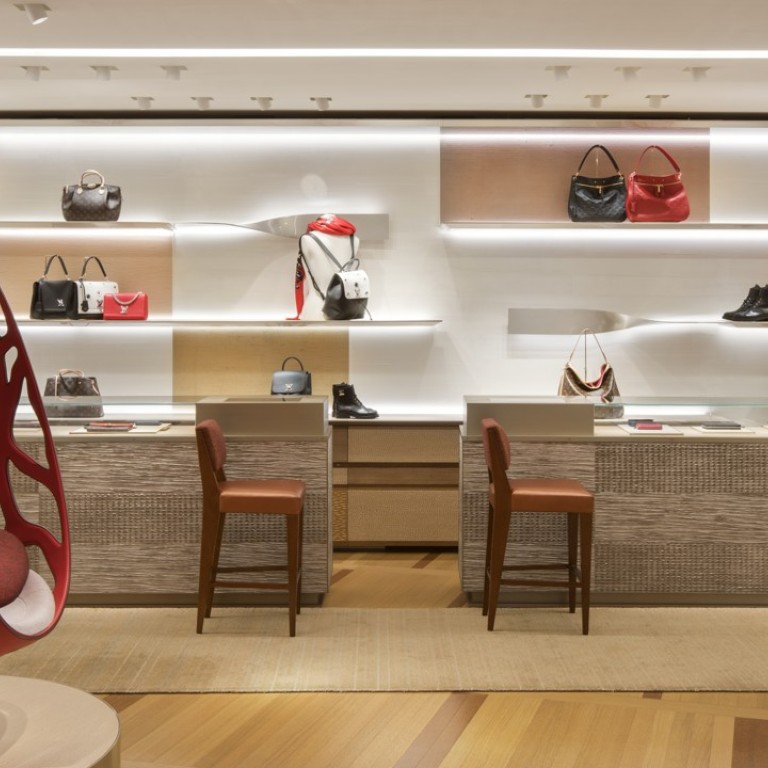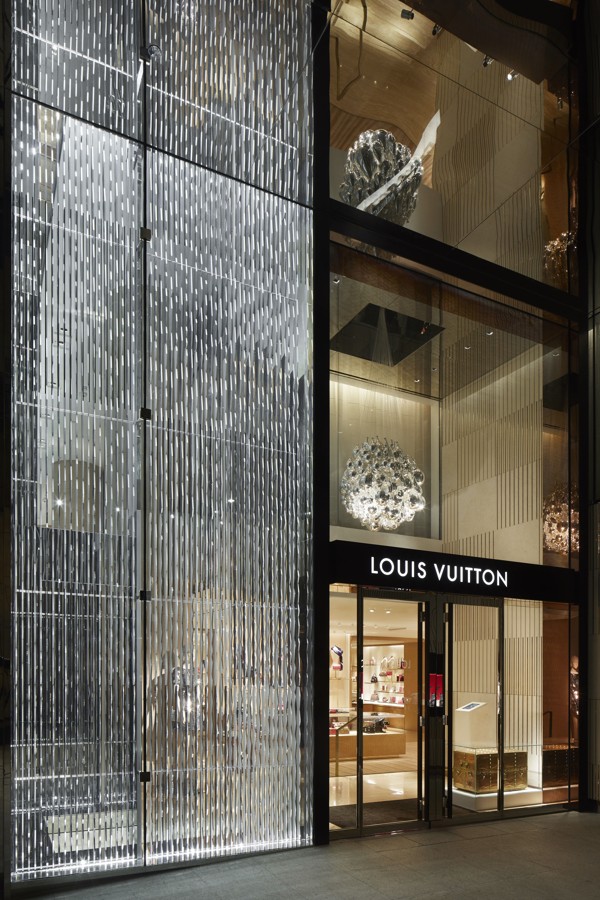
Architecture, art and a dash of the provocateur behind success of luxury retail interiors
Two new interior projects by Peter Marino, known for his groundbreaking design projects around the world, are on show in Hong Kong
When it comes to explaining the success of his 30-year career creating luxurious modern residences, retail stores, and hotels, the American architect Peter Marino epitomises the line: “Everybody’s got to have a gimmick.”
Marino’s own gimmick is the ability to integrate his rigorous architectural training at Cornell with an encyclopaedic knowledge of fine arts that places him in a unique position to curate and commission distinctive artworks for his projects. Then, add a dash of the provocateur: Marino, 67, is almost as well known for his penchant for head-to-toe black leather biker gear and gothic-style jewellery.
In Hong Kong, Marino’s style is on show at his two newest interior projects at French fashion house Louis Vuitton’s Canton Road boutique and the company’s flagship store in Central’s Landmark shopping mall.
The challenge, he says, was to redefine the retail experience for distinctly different shoppers: the Kowloon store predominantly caters to tourists and the Central boutique attracts more local fashionistas.

“There are so many different categories of merchandise now so the trick is to integrate them in a fun and easy way so the client does not necessarily focus on differentiation but rather the total experience,” he said.
Contemporary art on show includes the Central boutique’s installation of mirrored glass balloons by Belgian artist Michel Francois, while in Canton Road, Berlin-based Matthias Bitzer’s intriguing “Ghostland” is a paper-and-epoxy-on-board artwork.
“For me, it is paramount for a luxury fashion brand to have fine art in a retail space,” Marino says. “It is important to give clients an elevated shopping experience whether they purchase or not.”
Indeed, in 2016 Marino dedicated his first major monograph, Peter Marino: Art Architecture, to explaining this relationship, setting out his most famous commissions, including a monumental 11-metre-high strand of hand-blown glass “pearls” created by French artist Jean-Michel Othoniel at London’s New Bond Street Chanel boutique, and David Wiseman’s delicate, nature-inspired porcelain sculptures for Dior’s New York, Shanghai and Ginza stores.
Marino regularly designs spaces around a specific artwork.
“Artwork needs its own breathing space and is not meant to compete with merchandise, so I never place it alongside the product,” Marino stressed. “It may float above or, as in the case of sculpture, occupy its own zone, but it is meant to be appreciated in its own context.”
Artwork needs its own breathing space and is not meant to compete with merchandise, so I never place it alongside the product
Clients who have worked with Marino in the past say they appreciate how he takes considerable care that newly commissioned artists fully appreciate the brand’s DNA.
Comfort also features high on Marino’s must-have design list, with stores featuring plenty of plush chairs and sofas.
“In a luxury store, the experience of shopping must be of the highest level. Being able to pause and relax is just one of those amenities that Louis Vuitton puts forth for its customers everywhere in the world,” he said.
The designer, whose eponymous – Peter Marino Architect – headquarters is based in New York, is also notoriously fastidious about details from texture and finishes, with Louis Vuitton’s Landmark boutique showcasing suspended brass hanging rails and textured wall coverings.

Good design, however, is not merely a case of expensive materials and contemporary art.
“I have 30 years of retail design experience and that counts dramatically for avoiding errors,” Marino said
In fact, even his early childhood still influences his work today, he says, referring to a childhood disease that severely limited his physical movement until the age of seven. Drawing and learning the art of visualising architectural spaces were his refuge.
“My eyes quickly and photographically record a space that I can then mould, moderate, work with - much as a sculptor would with clay,” he said. “It’s funny: when my wife [a costume designer] and I go out to dinner, upon returning home she can draw what every person at the table was wearing – from shoes to jewellery. I never notice. But I could do a watercolour of the room pretty nearly to 100 per cent accuracy. That heightened sense of my surrounding has dictated my professional skills.”

